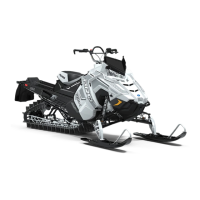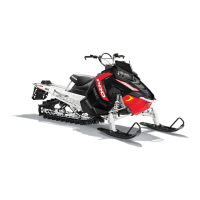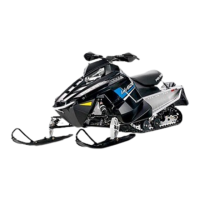7.21
Shocks
7
12. Set the IFP so it is approximately 1/8 from the bottom
of the reservoir. Install the bleed screw.
13. With the cylinder head assembly pushed down
ag
ainst the valve piston, dip the piston assembly in
shock oil.
14. Fill the shock body with oil to
the bottom of the threads.
Carefully insert the piston rod and valve assembly into
the cylinder.
• Slightly oscillate the piston rod to
allow the piston
to enter the shock body bore as it purges the air
out
• Slight up and down movement may be required to
allow all the air
to pass through the piston
assembly.
15. Slowly push the piston rod and assembly into the
sho
ck body until the threads can be engaged.
NOTE: During installation, some shock oil will over
f
low. Wrap a shop cloth around the shock body to
catch any oil overflow.
IMPORTANT: Fast installation of the piston rod and
as
sembly may displace the internal floating piston
(IFP) from its original position. Performance issues
will be a result if the IFP is not in its specified position.
16. Tighten the cylinder head onto the shock body.
17. Verify the IFP is set at the specified depth. If not, verify
th
ere is oil on top of the IFP, then open the bleed
screw.
18. Set the IFP to specification, then close the bleed
screw.
19. Pour out any remaining shock oil from the reservoir.
20. Install the cap making sure the o-ring does not flip-
o
ver. Install the snap ring.
21. Charge the shock to the specified pressure.
22. Clean the shock of all oil reside and check for any
leaks.
23. Install button screw onto the reservoir cap.

